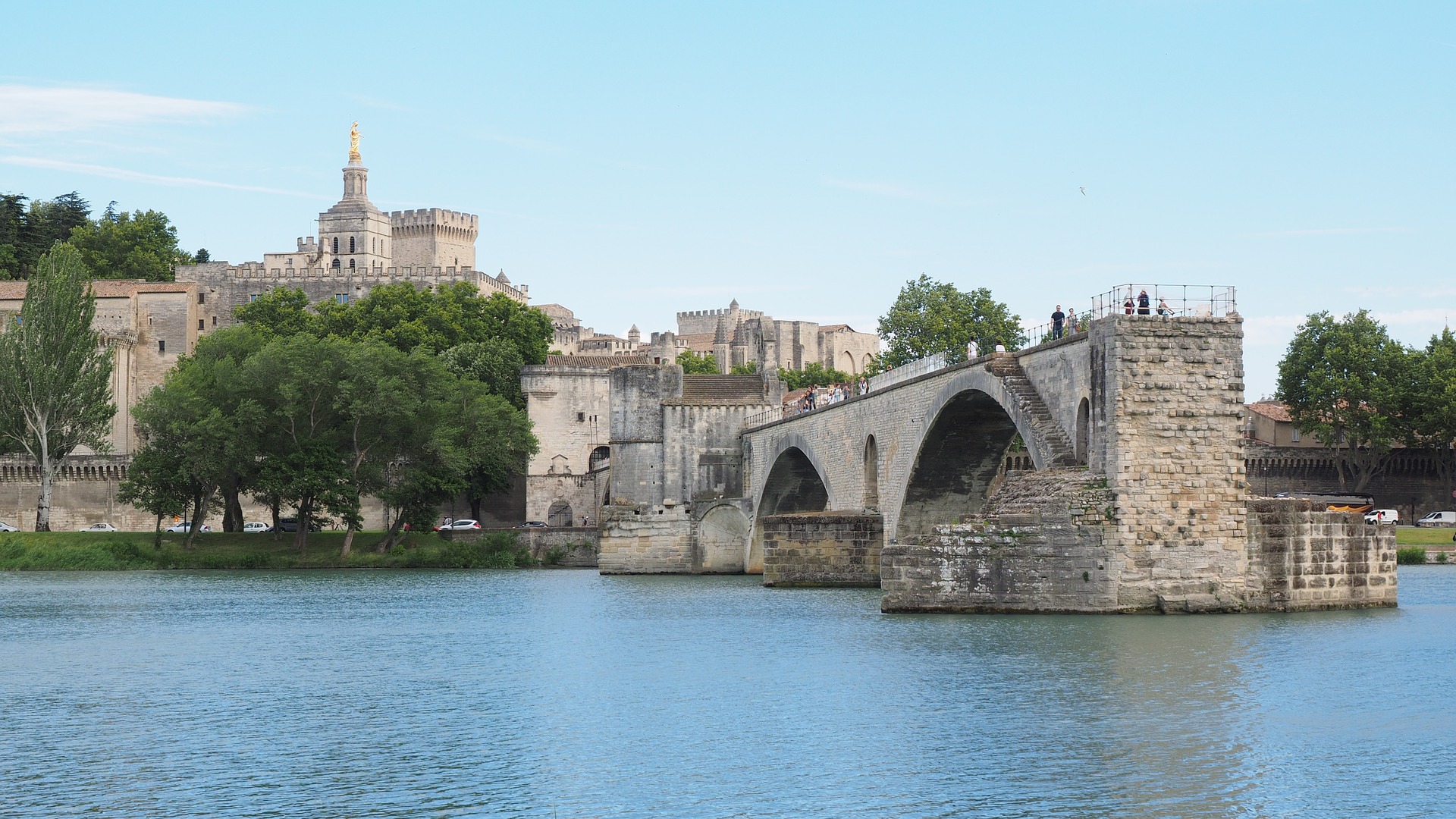
When I was a very small boy, my mother was eager that I should learn French and once taught me that old folk song Sur le Pont d’Avignon (“On the Bridge of Avignon”). You probably know the one I mean. It’s an action song describing the steps and gestures of a country dance. We used to sing the song over and over again, although it’s now thought that the locals were probably dancing under the bridge rather than on it. “Sous le pont”, rather than “sur”.
And so it was with a great deal of anticipation that many years later on a trip to Provence, I went to see Avignon’s famous bridge, built in the 12th century to link the opposite banks of the Rhône. Unfortunately, the bridge had gone. Well, most of it anyway. Perhaps to avoid disappointment, my mother had omitted to mention that the bridge, officially as the Pont Saint-Bénézet had been destroyed during a skirmish in 1226. Although it was rebuilt several times, it tended to collapse when the River Rhône flooded, with the result that in 1669 the locals finally gave up rebuilding the bridge leaving only the remaining four arches standing. It was only when I saw the ruins of the bridge that I realized the rich irony of the song.
The Rhône River is one of the great waterways of Europe, rising high in the Swiss Alps. It’s been a lifeline for Europe since Greek and Roman times and was the main trade route from the Mediterranean Sea to the heart of ancient Gaul. At just over five hundred miles in length, it’s also one of Europe’s longest rivers. The wine region known as the Côtes du Rhône (coat-duh-ROHN) means the “slopes” or “hills” of the Rhône and stretches over a hundred and fifty miles along the riverbank and far into the surrounding countryside from just south of Lyon to Avignon.
The Rhône Valley is one of the oldest wine growing regions in France and divided into the north and south, quite separate regions about an hour’s drive apart. Their wines are different due to climatic conditions, the position of the vineyards in relation to the river, the nature of the soil and the grapes that are used; in a word, the terroir. In the smaller quality-driven northern region, they tend to use Syrah almost exclusively for the reds and Viognier, Marsanne and Roussane for the whites. In the southern region, Syrah is also used but so are many other varietals.
Chapoutier La Ciboise Costières de Nîmes 2017 (red) Bt 670 (+ tax) @ Vines to Vino, Pattaya
Let’s start by decoding the label. Chapoutier is an old-established, award-winning winery in the Rhône region. As far as I know, is the only French wine company that includes information in Braille on its labels. La Ciboise is the trade name of this particular blend, borrowed from the name of the old family house once owned by the grandfather of the company’s president, Michel Chapoutier. Costières de Nîmes is the name of the wine district; the most southerly area of the Rhône region where wine has been made even before the Romans showed up in 31 BC. It takes its name from the ancient town of Nîmes (NEEM) and about 90 percent of the wine made there is red or rosé. It’s produced using the so-called Southern Rhône Blend which is nearly always composed of Syrah, Grenache and Mourvedre (known as Monastrell in its native Spain). These grapes make a robust and spicy wine ideally suited to the local cuisine.

In every aspect, this Chapoutier wine is typical of the region. It ticks all the right boxes and it’s an excellent example of a basic southern Rhône. It’s a dark inky red with shades of violet and you’ll probably notice those characteristic “legs” forming on the sides of the glass. In case you’re wondering, they’re known technically as the Marangoni Effect and often appear in high alcohol wines. This wine comes at 14% ABV and there’s a satisfying whiff of earthy, black fruit, dried herbs and a hint of raspberry. The aroma is quite complex and it takes a fair amount of glass-swirling before it emerges fully, so I’d strongly recommend that you aerate the wine first by pouring it into a wine jug or decanter and leaving it to stand for a few minutes.
On the palate the wine is full, with a beautifully smooth and silky texture and a pleasing balance of soft tannins. It’s dry and mouth-cleansing, medium bodied yet completely satisfying. To my mind, it’s bit softer than a Northern Rhône, with characteristic black fruit and peppery overtones. There’s a long, dry and persistent finish too. But it will suffer if you serve it too cold, because a low temperature will mask the aromas and accentuate the tannins. Just a few degrees under the ambient temperature should be about right. I’d say that this is a food wine and would make a good pairing with rich roasted dishes, such as beef or game. If the wines of the Southern Rhône are new to you, this would make an excellent and affordable introduction.
 |
 |
 |





